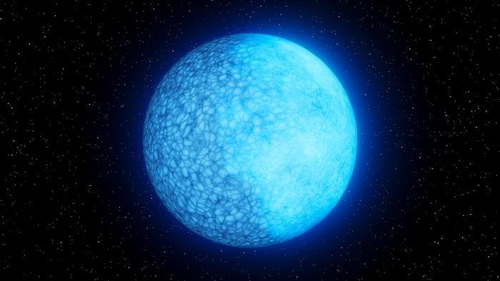An American research team “observed hydrogen and helium alternating every 15 minutes … the reason for the surface splitting is a mystery”
(Seoul = Yonhap News) Reporter Lee Joo-young = When a sun-sized star consumes all of its hydrogen, only its core remains at the end and it becomes a white dwarf. However, the discovery of a white dwarf half covered in hydrogen and half covered in helium piqued our curiosity.
A team led by Dr. Ilaria Kayazo, from the California Institute of Technology (Caltech), announced in the scientific journal Nature on the 22nd of this month that she had discovered for the first time a white dwarf (ZTF J203349.8 + 322901.1) with two faces, in which the hydrogen side and the helium side were observed alternating with the rotation of the star.
A white dwarf is the final appearance of a sun-sized star. As these stars age, they use up all the hydrogen in nuclear fusion, expand and become red giants, then lose all their surface gases and shrink their cores to become high-density, high-temperature white dwarfs.
Because of the white dwarf’s strong gravity, the heavy elements sink into the center and the remaining hydrogen and helium surround the outer surface. The Sun is expected to go through this process in 5 billion years to become a white dwarf the size of Earth.
The research team named this two-faced white dwarf Janus, after the Roman god. The star was first observed by Palomar Observatory’s wide-field astronomical observing instrument, the Zwicky Instantaneous Capture Facility (ZTF), which is operated by Caltech.
They found that the star’s brightness changes rapidly, and confirmed that Janus rotates every 15 minutes by following observations with the Large Canary Telescope (GTC) instrument and instrument at the Paloma Observatory in Spain’s Canary Islands.
Then, observations at the W.M. Keck Observatory on Mauna Kea, Hawaii, revealed that only hydrogen and helium wavelengths were seen to alternate in the spectrometer at regular intervals as Janus rotated. This means that half of the star is covered in hydrogen and half in helium.
However, it is not known why Janus reached this state.
The research team proposed a hypothesis, saying that this is the first time that a white dwarf has been detected and that we may be witnessing a rare phenomenon in the evolution of a white dwarf.
“Some, but not all, white dwarf stars undergo a transition from hydrogen to helium on their surface. Janus may have been caught in the process,” Kayazu said.
When a white dwarf transforms into a white dwarf, the heavy elements sink into the center and the light hydrogen rises to the top.
But even if this hypothesis is correct, it remains a mystery why this phenomenon occurs in halves and not in whole stars.
“The answer may lie in the magnetic field,” Kayazu said. The magnetic field can prevent matter from mixing. The magnetic fields around stars tend to be asymmetric or one side is stronger, so mixing doesn’t happen on the side where the magnetic field is stronger, so there can only be hydrogen. “
[email protected]
(end)

“Coffee trailblazer. Social media ninja. Unapologetic web guru. Friendly music fan. Alcohol fanatic.”

